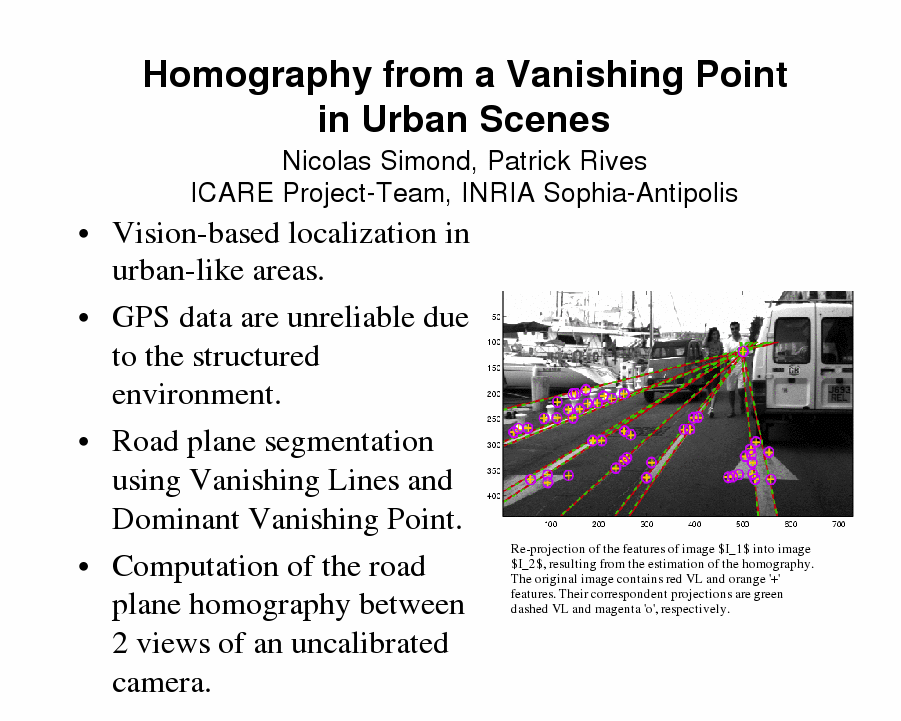Abstract:
In this paper, we address the problem of computing the ego-motion
of a
vehicle in an urban environment using dynamic vision. We assume a
planar piecewise world where the planes are mainly distributed along
three principal directions corresponding to the axes of a reference
frame linked to the ground plane with a vertical z-axis. We aim to
estimate both the motion of the car and the principal planes in the
scene corresponding to the road and the frontages of the building from
a sequence of images provided by an on-board uncalibrated camera. In
this paper, we present preliminary results concerning the robust
segmentation of the road using projective properties of the scene. We
develop a two-stage algorithm in order to increase robustness. The
first stage detects the borders of the road using a contour-based
approach and primarily allows us to estimate the Dominant Vanishing
Point (DVP). The DVP and the borders of the road are then used to
constrain the region where the points of interest, corresponding to the
road lane markers, can be extracted. The second stage uses a robust
technique based on projective invariant to match the lines and points
between two consecutive images in the sequence. Finally, we compute the
homography relating the points and lines lying on the road into the two
images.
|
 |